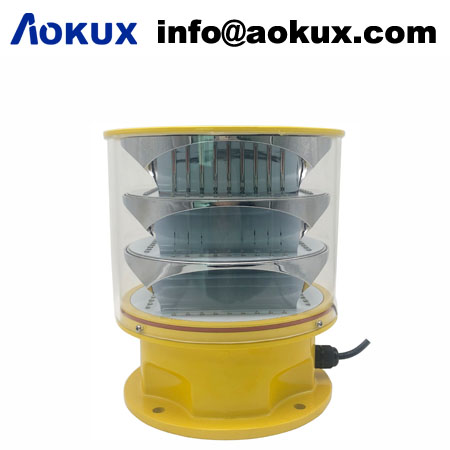
Enhancing Aviation Safety with Aircraft Warning Beacon
Introduction
In the fast-paced world of aviation, ensuring safety is paramount. One crucial aspect of maintaining safe skies is the use of aircraft warning beacons. These technologically advanced devices play a significant role in enhancing visibility and preventing accidents. In this article, we will explore the importance of aircraft warning beacons and how they contribute to aviation safety.
1. The Need for Enhanced Visibility
Aircraft warning beacons are designed to improve the visibility of structures, such as tall buildings, antennas, and wind turbines, which could pose a potential collision risk to low-flying aircraft. By emitting bright, pulsating lights, these beacons alert pilots to their presence, allowing them to take appropriate precautions. This increased visibility helps prevent accidents and ensures the safety of both aircraft and the structures themselves.
2. Types of Aircraft Warning Beacons
There are various types of aircraft warning beacons available, each suited to different structures and environments. High-intensity white strobe lights are commonly used for tall buildings and telecommunication towers due to their powerful illumination capabilities. Medium-intensity red beacons are often installed on structures like bridges and wind turbines, while low-intensity red beacons are suitable for structures below a certain height threshold. It's essential to choose the appropriate beacon type to ensure optimal visibility and compliance with regulations.
3. Complying with Aviation Regulations
Aircraft warning beacons are not only beneficial for safety but also required by aviation authorities around the world. Different countries have specific regulations regarding the installation and operation of these beacons, aiming to standardize safety measures across airspace. Compliance with these regulations is vital to avoid penalties and maintain a high level of aviation safety.
4. Technological Advancements
Continuous advancements in technology have significantly enhanced aircraft warning beacons. Modern systems now incorporate features such as automatic light synchronization, remote monitoring, and fault detection capabilities. These advancements minimize maintenance requirements, improve reliability, and ensure uninterrupted operation. By leveraging cutting-edge technology, aircraft warning beacons offer a more efficient and effective solution to enhance aviation safety.
5. Future Developments
As the aviation industry continues to evolve, so too will aircraft warning beacons. Researchers are exploring the use of advanced lighting technologies, such as LED lights, which offer longer lifespans, reduced energy consumption, and enhanced visibility. Additionally, integrated sensors and communication systems are being developed to provide real-time data on beacon status, allowing for proactive maintenance and improved overall performance.

Conclusion
Aircraft warning beacons play a vital role in aviation safety by enhancing visibility and reducing the risk of collisions with structures. These technologically advanced devices not only comply with aviation regulations but also contribute to better overall safety standards. As technology continues to advance, further improvements in beacon design and functionality will undoubtedly lead to safer skies for all those involved in air travel.
|
Aircraft Warning Beacon |
Aircraft Warning Beacons |